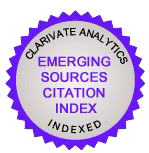Проблемы интерпретации сюжета «Преступления и наказания» Ф. М. Достоевского в текстологическом аспекте
Palabras clave:
Dostoevsky, “Crime and Punishment”, textual criticismResumen
The article is devoted to the creative history of Dostoevsky’s novel “Crime and Punishment”. It analyzes the problems of interpretation of the work, such as its plot, artistic images and ideas. The study takes into account the extensive scientific literature on the poetics of “Crime and Punishment”, as well as Christian theme as the basis of its plot. One of important aspects analyzed in the article is the diversity and inconsistency of previous research assessments of the novel, and thus fundamentally different understanding of the character of Raskolnikov and his relation to faith and God. The second aspect of the analysis is the openness of the novel’s ending and the question of the criminal’s remorse. The novel’s plot is known to receive different interpretations depending on how researchers interpret the above aspects. Of particular importance for understanding of such problems is the textual analysis of the novel’s materials (draft manuscripts, most of which are located in the author’s working notebooks). Addressing the handwritten text of the author, i.e., his “creative laboratory”, allows us to see his artistic vision and process in development, and thus to evaluate the reliability of previous research assessments of the novel. In addition, the analysis of the manuscripts of “Crime and Punishment” contributes to further elaboration of Dostoevsky’s texts: the article corrects errors made in earlier publications of handwritten texts that distort or misinterpret the meaning of the writer’s notes, and hence his ideas. Restoration of the authentic text is important to achieve adequate interpretation of the material and a more accurate understanding of artistic images, themes and motifs of Dostoevsky’s work.Descargas
Descargas
Publicado
Cómo citar
Número
Sección
Licencia
Los autores conservan los derechos de autor sobre sus trabajos y garantizan a la revista el derecho de ser la primera publicación del mismo. Los artículos se publican bajo la licencia Creative Commons Atribución-NoComercial 4.0 Internacional (CC BY-NC-SA 4.0), lo que permite a los lectores y otros investigadores copiar, redistribuir, remezclar, transformar y construir a partir del material, siempre que se respeten las condiciones establecidas.












